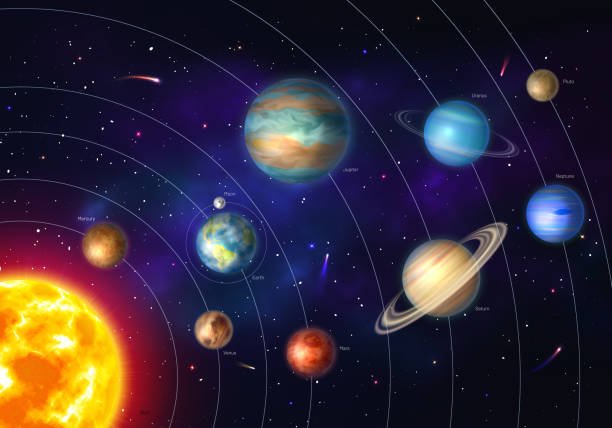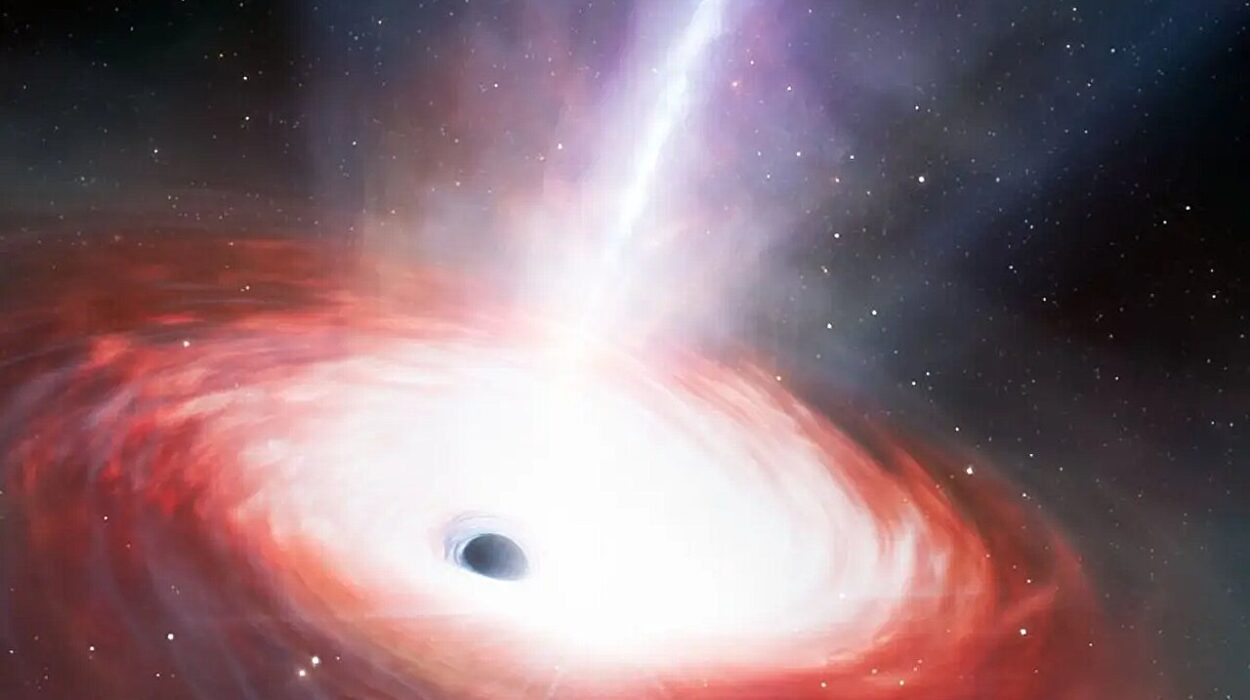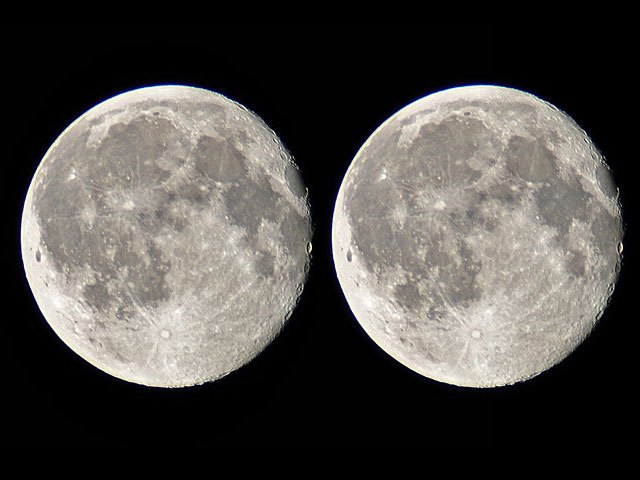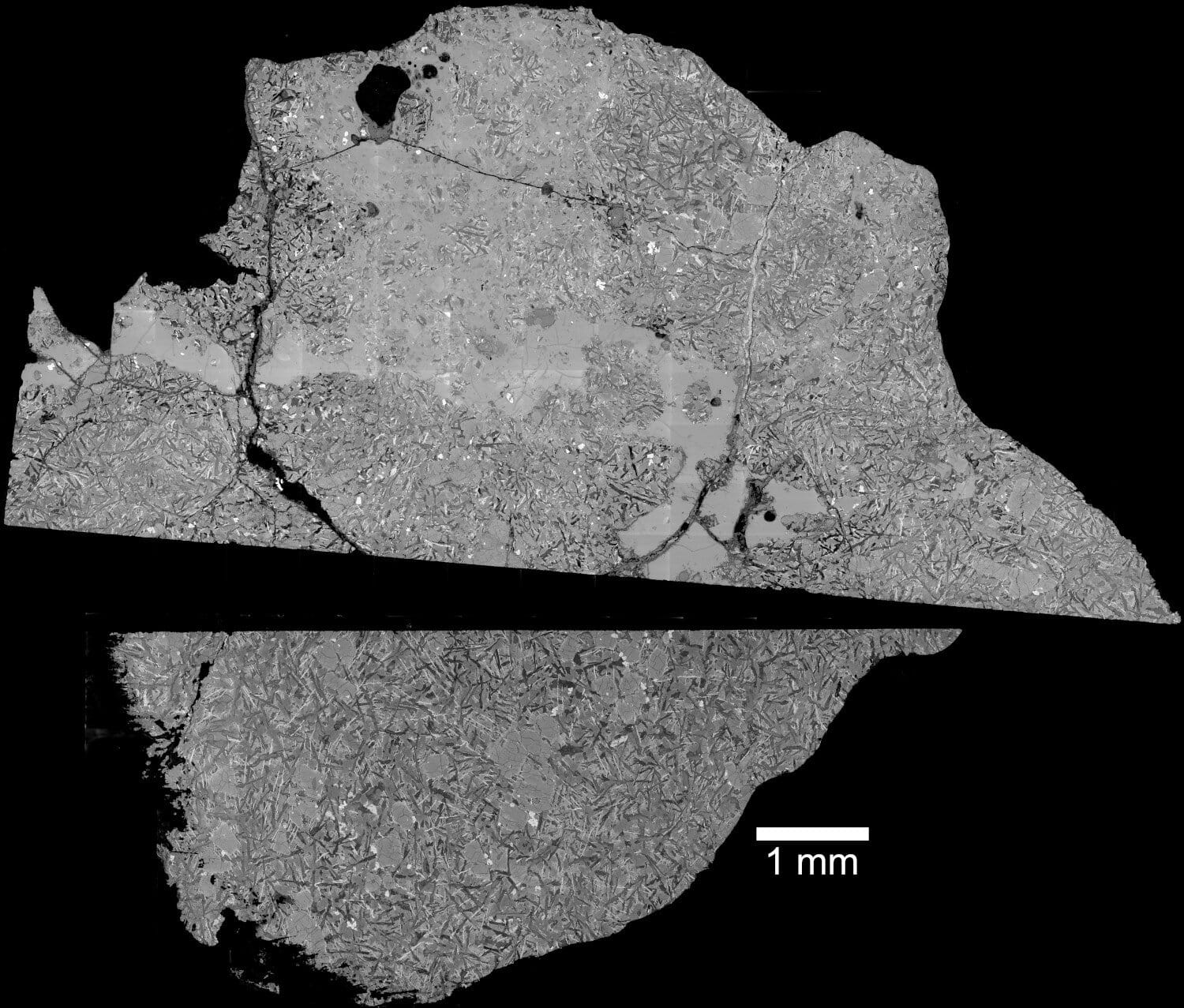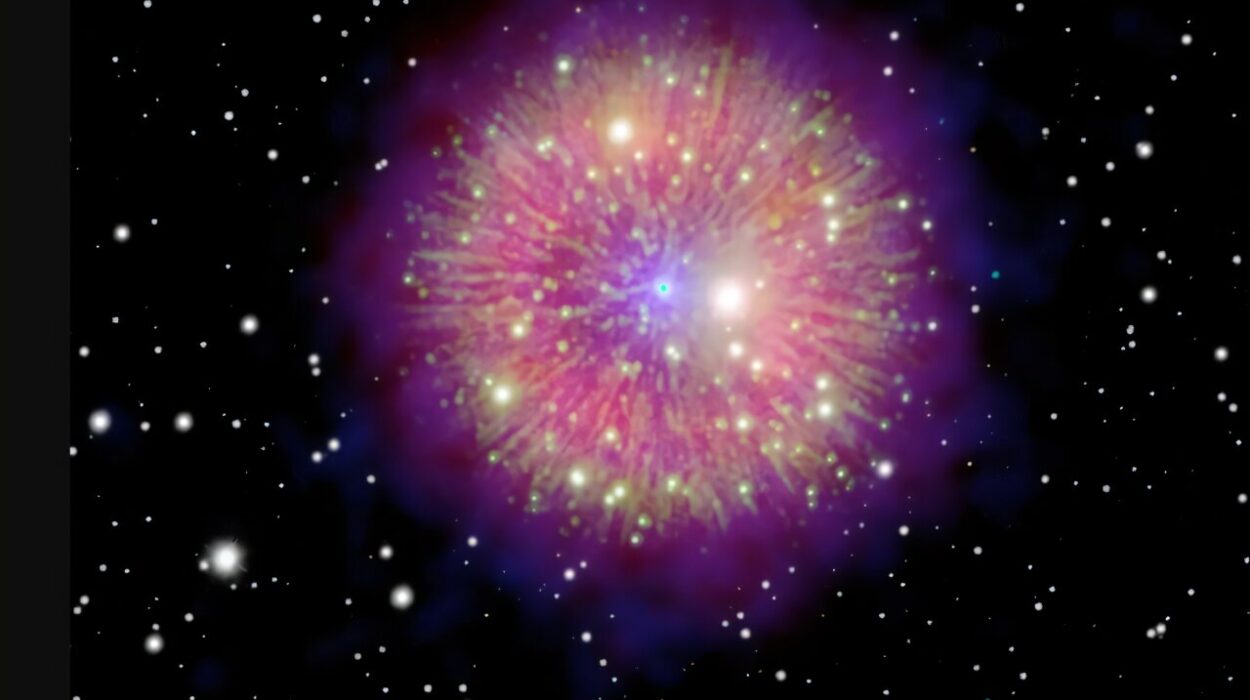When you gaze at the night sky, what do you see? A canvas of stars, perhaps the glow of the Moon, and maybe a bright dot that’s actually a planet. But beyond what our eyes can capture, an astonishing system of celestial bodies is silently and elegantly orbiting our home star, the Sun. This system is not only where Earth resides—it’s our cosmic neighborhood, our origin story, and our gateway to understanding the universe itself.
The solar system is far more than a collection of planets circling a star. It is a dynamic, evolving laboratory of cosmic history, stretching over 4.6 billion years. It contains everything from the Sun’s blazing fusion furnace to icy bodies on the fringes of space, and it offers endless fascination. With each planet, moon, asteroid, and comet, the solar system tells a story of birth, destruction, rebirth, and motion—stories written in craters, frozen oceans, swirling storms, and planetary rings.
In this extensive journey, we’ll dive deep into what the solar system is, how it formed, what it contains, how it functions, and why it matters not just to astronomers and astronauts, but to every one of us.
The Solar System Defined: A Star and Its Retinue
At its most fundamental, the solar system consists of the Sun and all the objects that orbit it due to its gravity. This includes the eight major planets, their moons, the dwarf planets like Pluto, hundreds of thousands of asteroids, and countless comets and icy bodies that dwell in the farthest reaches. But it also includes the space between these bodies—a vacuum filled with magnetic fields, solar wind, cosmic dust, and energetic particles.
Gravity is the architect of the solar system. It binds everything together in an intricate cosmic dance. The Sun, which contains about 99.8% of the entire system’s mass, dominates this gravitational choreography. Everything else, from gas giants to dust grains, moves in relation to it.
The solar system is vast. Light from the Sun takes just over eight minutes to reach Earth—but more than five hours to reach Pluto. And yet, this expanse is merely a drop in the ocean of the Milky Way galaxy, which houses hundreds of billions of stars. The solar system is our small, extraordinary corner of the cosmic metropolis.
The Birth of the Solar System: A Tale of Dust and Fire
To understand what the solar system is, we must begin with how it came to be. Its story begins around 4.6 billion years ago, in a giant cloud of gas and dust called a solar nebula. This nebula, likely enriched with elements forged in ancient supernovae, drifted through the galaxy until some event—perhaps a nearby star explosion—triggered its collapse under gravity.
As the cloud collapsed, it spun faster and flattened into a swirling disk. At the center, matter condensed to form the proto-Sun, a massive ball of gas hot enough to eventually ignite nuclear fusion. Around it, particles of dust and ice began sticking together, clumping into larger and larger bodies through a process known as accretion.
Over millions of years, these clumps became planetesimals, and later protoplanets—the seeds of the worlds we know today. Closer to the Sun, where it was too hot for ice to remain solid, rocky planets like Earth and Mars formed. Farther out, where it was colder, gas giants like Jupiter and Saturn captured thick envelopes of hydrogen and helium.
This early solar system was chaotic—a place of collisions, migrations, and reshuffling. Some protoplanets were destroyed in massive impacts, while others merged to grow. Moons formed from debris, or were captured by gravity. Even now, relics of this violent youth remain in the form of craters on the Moon and meteorites on Earth.
The Sun: Heart of the System
At the center of it all is the Sun—a blazing sphere of hydrogen and helium, a G-type main-sequence star, and the gravitational anchor of the solar system. Its diameter is about 1.39 million kilometers, over 100 times that of Earth. Its mass is such that its gravitational pull governs the motion of all other bodies within the solar system.
The Sun shines because of nuclear fusion in its core, where hydrogen atoms are squeezed together to form helium, releasing immense energy in the process. This energy travels outward through radiation and convection layers before streaming into space as sunlight. It warms our planet, powers weather systems, and makes life possible.
Beyond light and heat, the Sun emits a constant stream of charged particles known as the solar wind. This wind shapes planetary atmospheres and carves out a protective bubble in space called the heliosphere—a boundary where the influence of the Sun ends and interstellar space begins.
Despite its apparent constancy, the Sun is dynamic and alive. Its surface roils with convection, magnetic fields tangle and snap to produce solar flares, and every eleven years its activity cycles from quiet to stormy. One day, billions of years from now, the Sun will exhaust its fuel and transform into a red giant, swallowing the inner planets before ending its life as a white dwarf. But until then, it remains the luminous heart of our solar system.
The Planets: Worlds of Diversity
Eight major planets orbit the Sun, and no two are truly alike. They are traditionally divided into two categories: the four terrestrial planets—Mercury, Venus, Earth, and Mars—and the four gas and ice giants—Jupiter, Saturn, Uranus, and Neptune.
Mercury, the closest planet to the Sun, is a small, airless world scarred by craters. Venus, shrouded in clouds of sulfuric acid, has a hellish surface temperature hotter than Mercury despite being farther from the Sun. Earth, our home, is a marvel of life-supporting conditions, with liquid water, a magnetic field, and a dynamic atmosphere. Mars, the red planet, once had flowing rivers and lakes, and perhaps life, in its ancient past.
Then come the gas giants—Jupiter and Saturn. Jupiter is the largest planet, with more mass than all the others combined. Its atmosphere is a roiling soup of storms, including the famous Great Red Spot, a hurricane-like vortex larger than Earth. Saturn is known for its spectacular ring system, composed of countless icy particles, each orbiting the planet in its own miniature dance.
Beyond them lie Uranus and Neptune, the ice giants, named for their deep blue hues and cold compositions. Uranus is tipped almost sideways, perhaps due to a massive impact long ago. Neptune is a dynamic world with the fastest winds in the solar system and a faint system of dark rings.
Each planet is accompanied by its own family of moons. From the volcanic hellscape of Io (orbiting Jupiter) to the icy ocean worlds of Europa and Enceladus, these moons are worlds in their own right—some potentially harboring life beneath their frozen crusts.
Dwarf Planets and Small Bodies: The Forgotten Majority
Not all objects in the solar system are planets. In 2006, the International Astronomical Union reclassified Pluto as a dwarf planet, sparking controversy and debate. But Pluto is not alone. It is one of a growing family of dwarf planets, including Eris, Haumea, and Makemake, orbiting the Sun in the Kuiper Belt, a vast region beyond Neptune filled with icy remnants of the early solar system.
Farther still lies the Oort Cloud, a hypothetical shell of icy bodies surrounding the solar system, believed to be the source of long-period comets. These regions are largely unexplored, but they represent the outermost frontiers of our solar system.
Closer in, between Mars and Jupiter, lies the asteroid belt, home to millions of rocky bodies. While most are small, one—Ceres—is large enough to be considered a dwarf planet. These asteroids, along with near-Earth objects that cross our planet’s orbit, are relics of planetary formation and targets of scientific study and planetary defense.
Moons, Rings, and Magnetospheres: The Planetary Appendages
Moons, or natural satellites, orbit many of the planets and vary dramatically in size, composition, and history. Earth’s Moon is unusually large relative to its planet and stabilizes our axial tilt, influencing tides and possibly the evolution of life. Jupiter has over 90 moons, some of which, like Europa and Ganymede, are ocean worlds encased in ice.
Saturn’s moon Titan has a thick atmosphere and lakes of liquid methane and ethane. Neptune’s moon Triton orbits in the opposite direction of Neptune’s rotation—a clue that it was likely captured from elsewhere in the solar system.
Planetary rings, like those around Saturn, are formed from countless particles of ice and rock, each orbiting in its own path. These rings are not permanent—they are constantly being shaped by gravity, collisions, and solar radiation.
Many planets also generate magnetospheres—regions of space dominated by a planet’s magnetic field. Earth’s magnetosphere shields us from solar and cosmic radiation. Jupiter’s is the largest in the solar system and emits intense radiation that would fry unprotected electronics.
Comets, Meteors, and Interplanetary Dust: Cosmic Visitors
Comets are icy bodies that originate from the outer solar system. When they approach the Sun, their ices vaporize, creating glowing comas and tails that stretch millions of kilometers. Comets are time capsules from the solar system’s formation, and studying them can reveal insights into the origin of water and organic molecules on Earth.
Meteoroids are smaller chunks of rock or metal traveling through space. When they enter Earth’s atmosphere and burn up, they become meteors or “shooting stars.” If they survive the journey to the ground, they’re called meteorites. These relics are like cosmic postcards, bearing the chemical and isotopic fingerprints of early solar system processes.
Interplanetary dust, too small to see, fills the solar system and forms a faint glow called the zodiacal light, visible just before sunrise or after sunset under very dark skies.
Life in the Solar System: Earth and Beyond
So far, Earth is the only known world to support life. But could life exist elsewhere in the solar system? Mars once had water on its surface and might have hosted microbial life. Europa and Enceladus have subsurface oceans that could harbor life beneath their icy shells.
Titan’s methane lakes and organic-rich atmosphere raise questions about alternative biochemistries. Even Venus, with its extreme heat, has been considered as a possible host for aerial microbial life in its upper clouds, where conditions are less hostile.
The search for life within the solar system is not just about curiosity—it’s about understanding our own origins. If life can arise independently more than once, it may be common throughout the universe.
Exploration and Discovery: Humanity’s Reach into the Solar System
From Galileo’s first telescope to modern spacecraft, humanity has transformed the solar system from a set of wandering lights to a vibrant collection of worlds. Probes like Voyager, still traveling beyond the heliosphere, have revealed the outer planets. Rovers like Curiosity and Perseverance have traversed Martian landscapes, analyzing rocks for signs of ancient life.
Missions like New Horizons, which flew by Pluto, and Juno, currently orbiting Jupiter, continue to rewrite what we know. Future missions aim to return samples from Mars, land on Europa, and explore Titan’s methane lakes with flying drones.
Private companies and national agencies alike now look toward the Moon and Mars for future human exploration. The solar system, once unreachable, is becoming part of humanity’s extended presence.
Conclusion: A System, A Story, A Sanctuary
The solar system is more than a collection of planets orbiting a star. It is a grand narrative of creation, chaos, evolution, and potential. It is our home, our origin, and perhaps our future. From the fiery heart of the Sun to the icy comets on the edge of interstellar space, every object, every grain of dust, plays a role in this cosmic symphony.
To understand the solar system is to understand ourselves—where we came from, what we are made of, and where we might go. It’s a story written in starlight, craters, and the silent pull of gravity, inviting us to look up, to wonder, and to explore.
